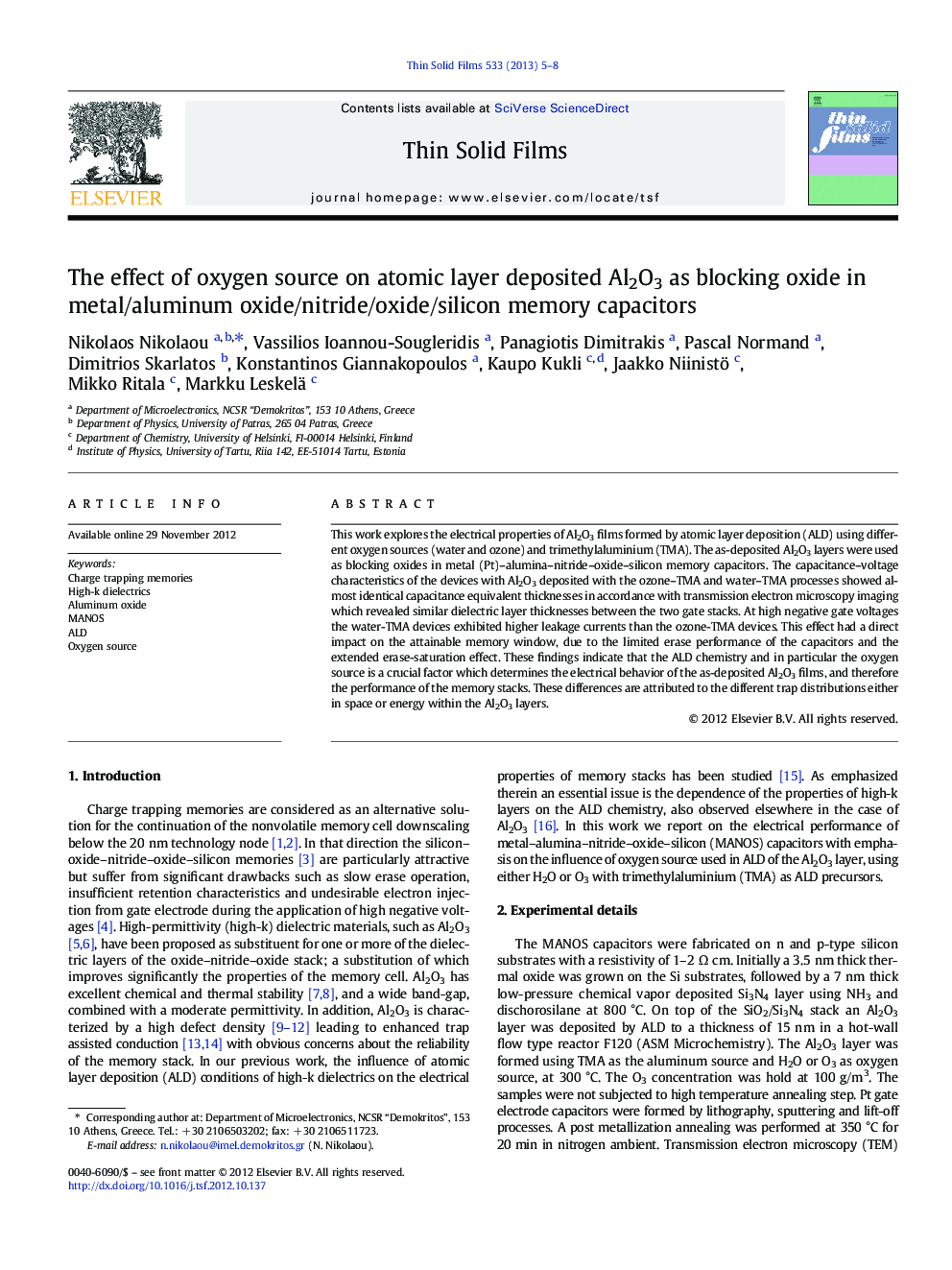| Article ID | Journal | Published Year | Pages | File Type |
|---|---|---|---|---|
| 1666408 | Thin Solid Films | 2013 | 4 Pages |
This work explores the electrical properties of Al2O3 films formed by atomic layer deposition (ALD) using different oxygen sources (water and ozone) and trimethylaluminium (TMA). The as-deposited Al2O3 layers were used as blocking oxides in metal (Pt)–alumina–nitride–oxide–silicon memory capacitors. The capacitance–voltage characteristics of the devices with Al2O3 deposited with the ozone–TMA and water–TMA processes showed almost identical capacitance equivalent thicknesses in accordance with transmission electron microscopy imaging which revealed similar dielectric layer thicknesses between the two gate stacks. At high negative gate voltages the water-TMA devices exhibited higher leakage currents than the ozone-TMA devices. This effect had a direct impact on the attainable memory window, due to the limited erase performance of the capacitors and the extended erase-saturation effect. These findings indicate that the ALD chemistry and in particular the oxygen source is a crucial factor which determines the electrical behavior of the as-deposited Al2O3 films, and therefore the performance of the memory stacks. These differences are attributed to the different trap distributions either in space or energy within the Al2O3 layers.
► Al2O3 films were formed by atomic layer deposition using H2O and O3 as oxygen sources. ► Al2O3 layers were used as blocking oxides in charge trapping memory capacitors. ► At high negative voltages, H2O-based samples exhibit higher leakage current density. ► The H2O-based samples have a limited ability to remove trapped electrons. ► Oxygen source differentiates the electrical behavior of as-deposited Al2O3 layers.
